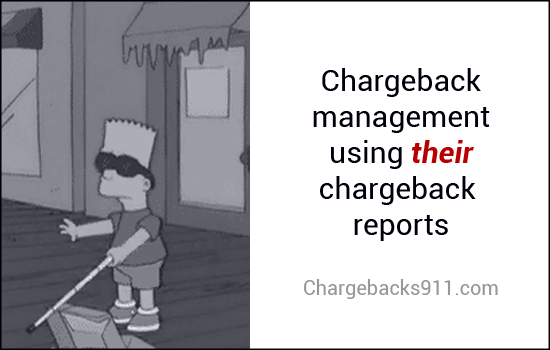Chargeback Reports: Learn to Use Existing Data to Prevent Disputes Before They Happen
Getting hit with a chargeback is never a good thing, and you should prevent them whenever possible. That said, if you do receive the occasional chargeback, you should take each one as a learning opportunity. That’s what chargeback reporting is all about: using data from a chargeback to help prevent other customer disputes from happening in the future.
A chargeback report offers insights into the sources, reasons, and validity of disputes. In this article, we’ll cover how chargeback reporting works, what information you can expect to gain through the process, and how you can leverage that information to reduce the number of claims filed against you.
Recommended reading
- Prevent Double Refund Chargebacks & Unnecessary Losses
- Chargeback Ratio: 8 Important Things to Know in 2025
- What’s an “Acceptable” Chargeback Rate? Why Does it Matter?
- Revenue Recovery: Tips & Best Practices to Reclaim Money
- Chargeback Automation | Better Dispute Management
- Chargeback Accounting: How it Works | Tips & Best Practices
What is a Chargeback Report?
- Chargeback Report
A chargeback report is a periodic report that compiles key chargeback stats to track trends and identify correlations between disputes and other business data. Chargeback reports can help merchants identify opportunities to increase efficiency, improve processes, and prevent future chargebacks.
[noun]/chahrj • bak • rə • pôrt/
A chargeback report draws on all the vital statistics generated when a customer disputes a charge. It usually correlates data from all the chargebacks received within a designated period of time (weekly, quarterly, yearly, etc.).
You can probably guess as to some of the information featured in a chargeback report. It includes the number of disputes initiated, the status of current representment cases, and so on. Other inputs may not be so obvious, though. The demographic and geographic data of cardholders who file chargebacks can be more helpful than you realize. This information can be used to help develop more effective prevention strategies.
The most effective approach to chargeback reporting is to collect as much data as possible. One can then analyze data for trends and consistent problem sources, then condense the findings into a user-friendly output. Ideally, a report will even suggest actionable steps to correct issues that cause chargebacks.
An effective chargeback report should focus on correlation between disputes and various risk factors rather than simply reporting top-line stats.
What’s the Purpose of a Chargeback Report?
Chargeback reports help you understand what types of disputes you’re receiving and what’s causing them. They’ll also show how successful you are at challenging the disputes you receive, and whether you’re receiving legitimate or fraudulent chargebacks.
A single chargeback can produce a lot of raw data. The value of the information depends on how much you gather, as well as how it’s compiled and organized. That last item is an important—but often neglected—piece of the puzzle. Reporting is pointless if not presented in a format that you can easily understand and use.
Your chargeback reporting should track transactions, chargebacks, representments, pre-arbitration chargeback data—among other points. Again, the more data you can collect, the better.
When all the information is analyzed and interpreted, you should be able to detect patterns and evaluate risk with much greater accuracy. Closely monitoring disputes can tell you:
- The ROI you’re getting from your fraud prevention efforts.
- Which methods are working best…or not working at all.
- The most common types of disputes impacting your business.
- Specific chargeback triggers (i.e. vendor, produce, geographical region, etc.).
- Whether certain tools you’re using actually work.
- If any chargebacks result from poor product quality or customer service issues.
This is the true benefit of chargeback reporting. An overview of your entire chargeback situation can help identify ways to reduce chargeback issuances and keep you from wasting resources trying to fight the wrong problem or deploying the wrong solution.
For example, if you see that a large portion of your chargebacks are legitimate, you’ll want to look for one or more internal errors that are triggering the disputes. However, if you find that most of the chargebacks you receive are unwarranted friendly fraud, you would address the issue in a completely different manner.
How Chargeback Reports Help With Dispute Prevention
Chargeback reports provide data on past disputes, which you can use to identify and patch chargeback trigger points. For example, you may be able to mitigate chargebacks by tactically addressing billing mistakes, inventory issues, fulfillment errors, or friendly fraud concerns.
You probably already know the importance of maintaining a low chargeback ratio. Monitoring how various factors affect chargeback rates is one way to fine-tune both your prevention and representment efforts.
For example, let's imagine that you're getting hit with a number of chargebacks every month. You believe the bulk of these chargebacks are coming from criminal fraud. The information in your chargeback report, however, suggests that customer service issues are actually to blame. Armed with that insight, you learn that you should worry less about fraud filters and focus more on improving customer service.


A good overall view of your chargeback situation could also reveal what products or services are triggering disputes. If you see a concentration of chargebacks on items in a specific price range, for instance, you may consider putting additional safeguards in place for those goods.
You should also be able to note any geographical regions or particular demographics that produce more disputes, and take action to protect your business in those areas.
What Data Should be Included?
Include as many datapoints as possible. This will give you a better chance of uncovering hidden correlations and trends between seemingly unrelated data elements.
Chargeback reports should reflect the needs of the individual merchant. There is no master list of data that must be included. Instead, you should identify all of your chargeback liabilities, relevant operational statistics, fraud indicators and transaction variables. The purpose of the report should be to uncover correlations between these different data points.
The more information your reporting solution can access and analyze, the more accurate and helpful your reports will be…at least in theory.
More data allows for more accurate decisioning. But, with so much information available, how do you decide which subsets to examine and which ones to discard? Unfortunately, in many cases, you won’t be able to. There’s simply too much data floating around. It’s more than the average merchant has the time or resources to fully digest.
This highlights one of the key benefits of outsourcing to the right professional chargeback manager. Partnering with an expert means you have an experienced team who does the bulk of the work for you. They sift through all the data to cross-reference and analyze the information as a whole. They can also filter that data into a precise, actionable, and easy-to-understand chargeback report.
It’s important to choose the right partner for your needs, though.
When it comes to chargeback reporting, some service providers essentially do data dumps. They shower you with every bit of information they collect. The volume of data may be impressive…but it doesn’t help if you can't make sense of the report. That's why it’s important to have a team who understands the difference between gathering data and reporting it.
Making Chargeback Reporting Work
A good chargeback report should be easy to sort, interpret, and act upon.
Chargeback reports are an essential tool for mitigating risk and creating a sustainable business. But convoluted, confusing, inaccurate, or out of date reports could do more harm than good. Even worse, trying to combat the wrong problem based on insufficient or overlooked data could increase risks and costs, and may escalate an already bad situation.
The ideal reporting system analyzes all available data—including information from outside sources—and should have a customizable interface that allows you to access the information you need most. The report should be:
Easy to Sort
Easy to Interpret
Easy to Action
Like we mentioned, trying to perform all of this with an in-house team can be difficult. Your access to broader industry data is limited. Plus, most merchants don’t have the experience or expertise to analyze the information at a granular level.
At Chargebacks911®, we make sure you have exactly the data you need. You get accurate chargeback reporting tailored to your needs and organized according to your preferences. We do the heavy lifting, so you can get back to the business of running your company.
Ready to learn more? Contact Chargebacks911 today.
FAQs
What is chargeback reporting?
Chargeback reporting is the process of documenting and analyzing a business’s chargebacks. The process involves compiling data on chargeback reason codes, transaction amounts, and the number of chargebacks received to help prevent future chargebacks.
What can a chargeback report tell me?
A chargeback report can answer many questions about your chargeback strategy. It provides information on which tools and strategies are preventing chargebacks, what are the sources of your chargebacks, and how much ROI you can expect, among other points.
How often do I need a chargeback report?
To be proactive, you need to routinely review your chargeback reports to detect threats as they arise. Ideally, you’ll need access to daily, monthly, bi-monthly, and quarterly reports that clearly illustrates up-to-date results.
Who pays chargeback fees?
Merchants pay chargeback fees, which range between $20 and $100 per dispute filed. Chargeback fees are assessed by acquiring banks. In severe cases, acquirers may levy administrative surcharges and penalties upon “high-risk” merchants who receive excessive chargebacks.
What is a purpose of a chargeback report?
A chargeback report helps merchants monitor, analyze, and reduce the number of chargebacks they receive. It also allows merchants to develop chargeback prevention strategies based on chargeback reason codes they encounter, improve their dispute resolution process, and increase customer satisfaction.
What happens when someone files a chargeback?
When a cardholder files a chargeback, the issuer reviews the claim and sends a chargeback reason code to the merchant via the acquirer. Upon receiving the chargeback notification, the merchant can either accept the chargeback, or challenge it in representment.
To contest the cardholder’s claim, the merchant must submit compelling evidence and a rebuttal letter that addresses the reasons for the dispute. The issuer will review the evidence and reverse or uphold the chargeback. If either party is dissatisfied with the ruling, the chargeback may proceed to pre-arbitration or arbitration.















